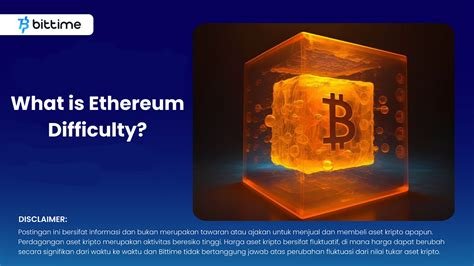Ethereum: deep to dive into the difficulty calculation
As one of the most commonly used blockchain platforms, Ethereum depends highly dependent on complex algorithms to ensure their safety and network stability. An essential aspect is the calculation of difficulties is the process that determines how often new blocks are created, which in turn influences scales and network performance. In this article, we will break how difficulties calculate simple English.
What is the gravity?
The difficulty means the time required to solve the Mathematical Breaker Complex (known as “Bolsa”) to solve the legality of the new block in the Ethereum block circuit. This process is called work proof (pow). The harder the break -let it go, the more time it takes to the mining to break it.
The work proof process
To understand the calculation of difficulties, let’s look at the basic steps:
1.
- Magazine Function : Miner uses a sophisticated algorithm called Sha-256 (Mags Safe 256 algorithm) to create an exclusive digital digital printing for each block. This bag function occupies a large entry (block content) and creates a fixed outlet (bag).
- Objective of gravity
: Minex intends to find a scholarship that meets the objective of the difficulty of the network. In other words, they need to resolve the break -go to prove that the new block is valid.
- Work Proof Algorithm : Miners use a variety of methods to optimize solution space and accelerate the process. A conventional method is to use multiple “speculation” (different solutions) until one corresponds to the difficulty level.
Dificities Formula de Tutters
The purpose of gravity is calculated using a complex formula that takes into account several factors, including:
* Block has : the number of blocks already attached to the blockchain.
* Network Bag Power : The whole collective bag of Ethereum mug. This indicates the general network calculation capacity.
* Block creation time : How long has a new block.
The formula is as follows:
`Heaviness = (block height / block creation time) ^ Network Bag Power”
How do difficulties affect the network?
More difficulty for more calculation and energy is required to solve the break -in. This, in turn, increases the speed of the block and increases the congestion of the network. That’s why:
* Creation of slower block

: As difficulties increase, mining creation takes longer to create new blocks.
* Increased congestion : When more counting features were for breaking -the network is overcrowded and slower.
* Higher energy requirements : higher gravity goals require more energy to buy mining equipment, which can lead to higher electricity costs.
Conclusion
Simply put, the difficulty in calculating Ethereum is a complex process that involves complex mathematicians (work test) to create new blocks. The power and time of the creation of a block -breeding network of block creation are used to determine how often new blocks are created. The large goal of difficulty requires more calculation and energy power, which can lead to slower blocks of creation and increase congestion.
Although this may seem scary, the Ethereum community has developed a variety of methods to optimize its solution space and improve the overall network efficiency. As the network continues to grow and develops, the exact importance of calculating difficulties will become more important only to ensure the safety and stability of the system as a whole.




